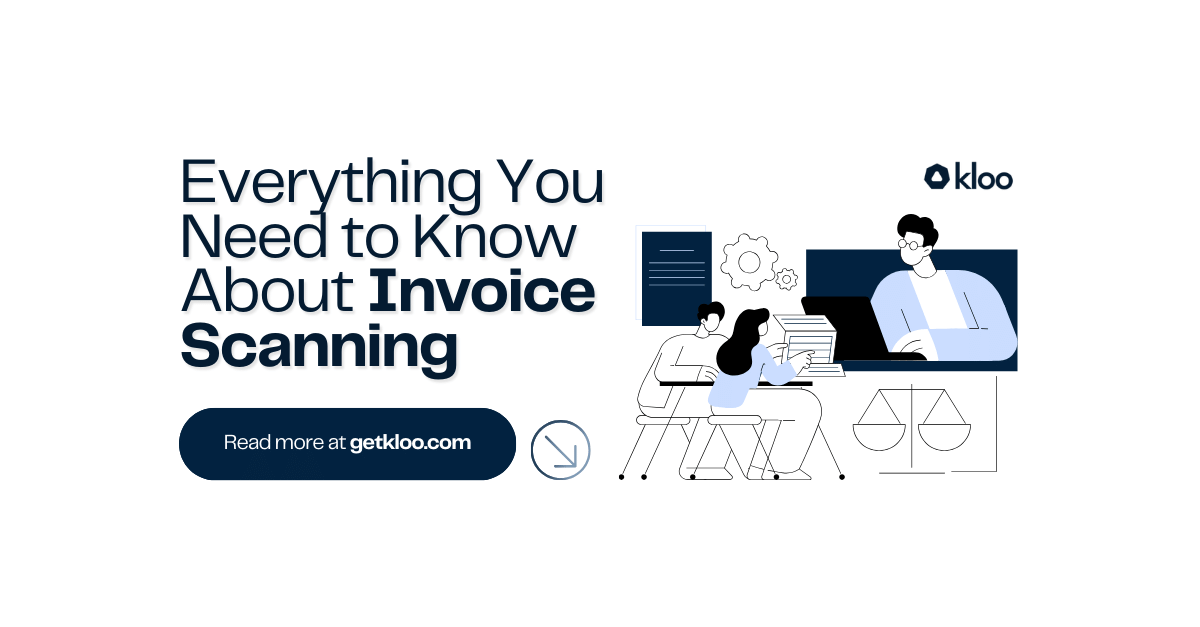Everything You Need to Know About Invoice Scanning

Invoice scanning is the process of converting paper or electronic invoices into digital formats using Optical Character Recognition (OCR) technology, describing the more technical process within the invoice management process. This step is crucial within the broader accounts payable process, as it enables accurate and efficient data capture, streamlining invoice processing and payment. This guide will cover everything you need to know about invoice scanning and how it works, and how it can be automated with AI to reduce manual errors, ensure compliance, and improve overall financial management.
What is Invoice Scanning?
In the broader context of Accounts Payable (AP) management, invoice scanning refers to digitising supplier invoices into various electronic formats using Optical Character Recognition (OCR) technology. As traditional methods of handling physical or paper invoices become less common, there is a significant shift towards digital invoice capture to comply with new regulatory requirements in the financial sector. This approach ensures that all invoice information is accurately captured before proceeding to further processing stages.
How does Invoice Scanning Work?
Invoice scanning commonly involves OCR technology extracting textual information from invoices into digital text, and machine learning to examine the document's structure to detect patterns. This allows the scanning software to distinguish between different data types, such as invoice numbers and company numbers, and accurately populate the relevant fields in a standard accounting system or ERP. Consequently, invoice scanning solutions convert unstructured documents into standardised, structured data.
Common Issues with Standard Invoice Scanning Techniques
Standard invoice scanning software may encounter several issues that may hinder efficiency and accuracy:
- Inaccurate Data Capture: Traditional OCR technology may struggle with poor-quality scans, varied fonts, and complex layouts, leading to incorrect or incomplete data extraction.
- Lack of Integration: Many systems do not seamlessly integrate with existing ERP or accounting software, resulting in fragmented workflows and data inconsistencies.
- Inflexibility: Standard techniques may not easily adapt to diverse invoice formats or new regulatory requirements, limiting their long-term utility and scalability.
- Limited Error Handling: Traditional systems may lack advanced error detection and handling capabilities, leading to unaddressed mistakes and potential compliance issues.
How to Automate Invoice Scanning with AI
Automating invoice processing with AI involves integrating advanced technologies such as OCR and machine learning into your AP system. OCR technology reads and converts text from scanned invoices into digital formats, while machine learning algorithms analyse the document structure to accurately identify and classify key data fields such as invoice numbers, dates, and amounts. This seamless integration not only ensures precise data extraction but also reduces manual processing time and errors. By automating invoice scanning, businesses can achieve a number of key benefits:
- Enhanced Accuracy: Automation minimises human error, ensuring that data is captured correctly and consistently.
- Increased Efficiency: Speeds up the invoice processing time, allowing for quicker payments and better cash flow management.
- Cost Savings: Reduces the need for manual data entry, lowering labour costs.
- Improved Compliance: Ensures that data is accurately captured and stored, aiding in regulatory compliance and audit trails.
OCR for Invoice Scanning: Kloo's Smart Invoice Inbox
AI-powered automation tools are paving the way for more efficient process workflows in invoice management. Kloo’s Smart Invoice Inbox extracts all relevant data from invoices using a blend of OCR and advanced AI technology, formats it according to ERP fields, checks for fraud, uploads it to both the ERP system and the Kloo platform, and manages the approval workflow. This comprehensive approach significantly ensures accurate and efficient processing coupled with an added layer of fraud detection over your invoices and AP data, so nothing gets left in unknown bottlenecks.
Conclusion
Invoice scanning is a crucial component of the Accounts Payable invoice management process. By automating data extraction and subsequent processing steps, companies can significantly reduce errors, save time, and lower costs. Understanding the benefits and how to overcome common issues with solutions like Kloo’s Smart Invoice Inbox can help businesses streamline their operations and achieve greater efficiency. As invoice scanning continues to rely on digital techniques and methods, adopting the most advanced technology will be essential for maintaining a competitive edge.
Let's get started
